Recent Storm Damage Posts
Wind Damage
7/12/2024 (Permalink)
High winds can damage your home As high wind speed moves through the community, they can carry debris from homes and buildings, which can contribute to the widespread destruction of properties. It is for this reason that it is essential to put in place preventive measures to prevent high winds from incurring damages on your property. Read on to learn more about how much wind your home can withstand and ways to strengthen your home from high winds.
How Much Wind Can Your Home Withstand? Even though all properties are truly unique in their own way, they all have relatively similar structural features that help them sway with the high winds. As storms have increased in severity in recent years, many building codes have been updated to ensure that properties of all sizes and classifications can withstand strong high winds, thereby decreasing the costs associated with storm damages.
According to the NOAA, hurricanes start at 74mph which are then classified by specific categories (1-5). For wind speeds weaker than 74 mph, you can still note these characteristics:
- 19mph: the swaying of small trees.
- 25mph: one cannot use the umbrella, and whistling of wires and branches can be heard.
- 32mph: difficulty when walking through the wind and swaying of the whole trees.
- 39mph: branches begin to break from trees, and vehicles veer on the road.
- 47mph: small structural damage.
- 55mph: wind begins to uproot trees, more structural damages.
- 64mph and up; most structural damage. As you can see, it’s not until wind speeds top 47 mph that structural damage is likely to occur.
Ways to Strengthen Your Home From High Winds If you want to rest easier when high winds blow through your neighborhood, then start with investing in modifications to your home that help reduce damage from heavy winds, such as pressure-rated windows. If you get the right pressure-rated windows, your property could be able to withstand wind gusts of up to 150 mph (Category 4 hurricane). Any doors that are leading to the outside should also be secured with three hinges and should be anchored to the door frame with a deadbolt.
Turning your home into a wind fortress may be extreme if you aren’t regularly forced to deal with strong winds. But that doesn’t mean that you shouldn’t take simple preventative measures to mitigate potential damage from the occasional heavy gusts.
Restoring Your Home Following High Wind Damage Following a high wind severe storm has rolled through, assess your property from top to bottom to determine if any damages have occurred. No matter when you end up sustaining high wind damage to your property, you can trust SERVPRO of Fayette County to restore your property back to its pre-storm condition. Call us today at 724-628-3022 to request a consultation!
Tracie "Dusty" Nichols
724-628-3022
Seasonal Storms
5/2/2024 (Permalink)
Here in Fayette County, we are no strangers to the seasonal storms that affect our area. Whether it be hurricanes, flooding, snowstorms, or freezes it is important to be prepared for whatever may come.
Part of being prepared is knowing what to do when the storm has passed. If you find yourself being affected by a storm event in the area, call SERVPRO of Fayette County immediately. Time is of the essence in these types of situations, so it is important to act as quickly as possible so we can start making your storm damage, "Like it never even happened."
How You Can Start Preparing Now:
- Know Our Area's Risk
- Heavy rainfall, high winds, flooding, snowstorms and freezes are weather related things our area needs to be aware and cautious of.
- Stock Up on The Necessities It is not uncommon for these larger storms to lead to power outages.
- Make sure you are stocked up on water, food, batteries for flashlights, and anything else you may need to feel more comfortable during a power outage.
- Keeping your cell phones fully charged as the storm nears is also smart; being able to contact family, friends, and first responders is always important!
- Stay Informed Keep an eye on our local news and weather alerts, for information regarding the storm.
- Staying alert for flash flood warnings and strong wind advisories can help keep you and your family safe throughout the storm.
- Have a Backup Plan If your home is in an area prone to flash flooding, have a backup plan!
- Call relatives and friends and make a plan to visit a home in a safer location during the storm! For more information on emergency preparedness, visit ready.gov
Tracie "Dusty" Nichols
724-628-3022
No Storms Can Cause Issues For Your Property.
7/7/2023 (Permalink)
We normally associate storm damage to flooding, high winds, and hail. What we forget, is that no storms can create issues for you and your property, too! On the other end of the scale if you don’t have rain or water for days, weeks, or months, then your community can go into a drought.
The main effects of drought are actually something you would never think of - flooding.
- When a drought occurs all of the moisture dries up causing clay heavy soil to shrink. This means the foundation that your home is built on begins to shift and crack from the changing movement. In turn, your foundation is not able to withstand the force of the movement and may start to crack under pressure. These cracks are silent and won’t affect you during the drought. Only until the drought is over and your area begins to bring rain will you discover the cracks to your foundation. From there water can enter your home causing the cracks to erode and make bigger openings. From there you can have moisture entering your home causing mold and even worse full blown flood!
Tracie "Dusty" Nichols
724-628-3022
Roof Damage
5/26/2023 (Permalink)
In any type of weather there are lots of different issues that could cause damage to your home; Roof damage is one of those. Damage due to storms is the most typical, but there are several things that COULD cause the damage to your roof some being more visible than others.
It is always good practice to have your roof inspected every 10-12 years, unless there has been a specific issue that may have caused a reason to check it sooner such as a severe storm, hail, or some other sort of natural disaster. Unfortunately, when your roof becomes damaged it can lead to bigger issues that may ultimately cause water damage to the interior of your home.
Here we mention a few things to look for when you are inspecting your roof:
- Loose or missing shingles: this could be caused by high winds, improper installation, or simply wearing out over exposure to the elements through the years. Loose nails can also leave a hole in the shingle that water can find its way through as well.
- Poor installation of the flashing. "Flashing" is the metal that is placed in the sections where the roof meets the walls, or in the valleys. This must be installed properly to divert water from the roof.
- Gutters that are not placed with the right pitch, or that have seams that are not sealed properly can also cause water to back up and then overflow into the house causing water damage to ceilings and/or walls. Not having gutter guards to keep leaves and debris from collecting in the gutters can cause overflow of water that can result in damage to your roof and other areas of your home as well.
Rotted fascia or soffit can also be an area that allows water to intrude.
If you suspect that you may have roof damage causing water damage to your home please feel free to contact us at and we will be happy to assist you. SERVPRO® of Fayette County can also supply emergency tarping and board up if the need may arise. SERVPRO® of Fayette County will be there for all of your home repairs or accidents.
Tracie "Dusty" Nichols
724-628-3022
Emergency Kits for Evacuation for the Deaf, Blind, and Service Animals
5/12/2023 (Permalink)
Need some help or information about Emergency Kits for Evacuation for the Deaf, Blind, and Service Animals?
Emergencies can be difficult for anyone but here are some tips/ preventions to help.
- Emergency Kit for Evacuation for the Deaf, Blind, and Service Animals in Fayette County
- Storm Damage & Evacuation in Fayette County
- Low vision or hearing loss may make a power outage more difficult in Fayette County. Evacuation may also be more difficult.
SERVPRO of Fayette County has these tips: Have an evacuation emergency kit ready. You can also use it at home. For people who have low hearing or deafness in Fayette County, consider the following:
- Extra batteries for hearing aids
- TTY
- If you Sign, have a pen and paper for people who do not know Sign
- Backup batteries for any augmentative communication devices
For people who have low vision or blindness in Fayette County, consider the following:
- Use large-print or Braille on labels
- Magnifiers or other assistive devices
- White cane (if you use one)
Storm damage makes life more difficult for service animals too.
For people who have service animals in Fayette County, consider the following: Food, water, and other supplies
Tell emergency responders that your service animal travels with you . Help keep them safe also.
Shelters and other buildings may not refuse entry to a service animal
Links: https://www.ready.gov/individuals-access-functional-needs
If you have any questions give us a call today!
"Like It Never Even Happened"
Tracie "Dusty" Nichols
724-628-3022
Pet Safety During the Winter
12/7/2022 (Permalink)
 Pet Safety During the Winter
Pet Safety During the Winter
At SERVPRO of Fayette County, we know that your pets are an important part of your family. Most pets are indoor animals, but it is a common sight to see pets outdoors also. Animals are prone to the same winter hazards as human beings, especially cold and ice. Here are some tips for keeping your family pet safe. Limit outdoor time on bitter cold days. Try to go out when the sun is shining. Even with fur, animals can become too cold and go into hypothermia. Avoid the ice. Animals can slip and fall just like you. More importantly, animals cannot recognize the danger of breaking through thin ice on frozen water. It is always better to keep your pet on a leash during the winter to help them steer clear of hazards. Wipe their paws when you come inside. Things in front of your home are often treated with salt or other de-icers. These substances can irritate your animal's paws. Some can be toxic, which is especially dangerous if your pet licks its paws. People and pets want a safe place inside for the cold months. If a winter emergency like a burst pipe makes your home unsafe, contact SERVPRO of Fayette County. We are here to help the residents of Fayette County quickly get their homes back to normal.
Tracie "Dusty" Nichols
724-628-3022
Disinfecting Drinking Water After A Disaster
7/15/2022 (Permalink)
EMERGENCY DISINFECTION OF DRINKING WATER AFTER DISASTER USE ONLY WATER THAT HAS BEEN PROPERLY DISINFECTED FOR DRINKING, COOKING, MAKING ANY PREPARED DRINK, OR FOR BRUSHING TEETH
1. Use bottled water that has not been exposed to flood waters if it is available.
2. If you don’t have bottled water, you should boil water to make it safe. Boiling water will kill most types of disease-causing organisms that may be present. If the water is cloudy, filter it through clean cloths or allow it to settle, and draw off the clear water for boiling. Boil the water for one minute, let it cool, and store it in clean containers with covers.
3. If you can’t boil water, you can disinfect it using household bleach. Bleach will kill some, but not all, types of disease-causing organisms that may be in the water. If the water is cloudy, filter it through clean cloths or allow it to settle, and draw off the clear water for disinfection. Add 1/8 teaspoon (or 8 drops) of regular, unscented, liquid household bleach for each gallon of water, stir it well and let it stand for 30 minutes before you use it. Store disinfected water in clean containers with covers.
4. If you have a well that has been flooded, the water should be tested and disinfected after flood waters recede. If you suspect that your well may be contaminated, contact your local or state health department or agriculture extension agent for specific advice.
Tracie "Dusty" Nichols
724-628-3022
Process of Storm Damage
6/30/2022 (Permalink)
I have Storm Damage! What is the Process?
In Fayette County terrible weather which causes Storm damage is a pretty common occurrence whether it's Hurricane season or not and this storm damage can wreak havoc on properties, homes, buildings and vegetation.
With storm damage comes high winds which in turn cause wind damage that can loosen or blow off roofing shingles and massively affect the health of your roof. The roof is a key element of any structure and when it gets compromised then moisture can penetrate the structure causing wood and other building materials to be affected. These effects are rotting, swelling, warping and destruction of these building materials. When these things start to happen the ceiling will become compromised and then a whole litany of problems can follow this problem.
Storm Damage brings high winds, hail, rain and lightning and these things can exacerbate the problem. For these reasons SERVPRO offers Storm Damage remediation 24, 7, 365 and we come in when nobody else will answer the phone and we get you back to where you were before the storm, "Like it never even happened."
The storm damage restoration process is pretty simple and usually follows these specific key stages of the process.
Step 1: Initial Inspection It does not matter if it’s a business, residential or facility property, the initial inspection is one of the most important aspects of the process. SERVPRO will send its storm damage experts to do a thorough examination of the interior, exterior, roofing and grounds of the property. This extensive inspection will help the SERVPRO professional discover and identify the extent of the damage, the source of the water intrusion and any other safety elements or important notes that need to be documented for the client and the insurance provider. When the initial inspection is completed the SERVPRO storm technicians will be able to create an initial scope of work for the project that will be discussed with the point of contact and the insurance adjuster on the claim.
Step 2: The Work Begins Once the scope of work needed to remediate the issues on the property have been agreed upon by the client, the adjuster and SERVPRO it is now time for the work to begin. The type and level of work will vary with each project sometimes requiring pumps & water extractors. Then there are times when the visible and standing water have already left the building and some light demo is necessary before placing dehumidifiers, fans and air scrubbers into the space. For larger loss projects things like desiccants, DX units and generators may be necessary. Regardless of the situation needed by the client at hand SERVPRO can handle any job large or small when it comes to storm damage or water damage.
Step 3: The Work is Completed Once the team has remediated all of the affected areas, removed all of the water and cleaned all of the affected areas professionally the technicians will remove all of the equipment from the property and make it like nothing ever happened. SERVPRO will create a report full of pictures, explanations, videos, daily reports, equipment logs, drying logs and a timeline to submit to the insurance company for approval. As you can see, when anyone suffers from storm damage due to natural disasters, the storm damage restoration process is something the SERVPRO experts can handle quickly and easily.
If you've recently suffered from storm damage and are looking for storm damage repair or water damage cleanup, contact the specialists at SERVPRO of Fayette County today to help restore your home.
Tracie "Dusty" Nichols
724-628-3022
Tips For Storm Damage
5/20/2022 (Permalink)
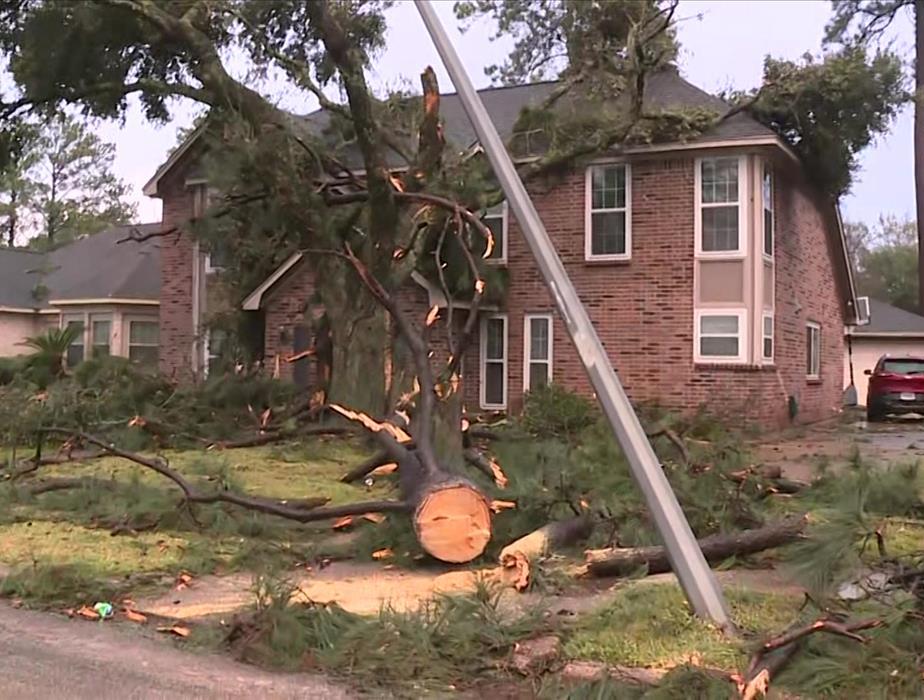 Tips For Storm Damage
Tips For Storm Damage
Severe storms can potentially result in costly storm damage repair if you’re not on top of the restoration process firsthand with a prominent Repair Company in Fayette County. So, when the storm is over, it’s important to know what to do, as well as what NOT to do. If you’ve experienced storm damage of any size, follow these key storm damage restoration tips.
Parts of your Property to Keep an Eye On
- To ensure your safety when checking for house damage, make sure to watch out for fallen power lines, standing water that may be electrically charged, and wild animals. Here are a few other areas that you should keep in mind while making your initial visual assessment.
Check your Plumbing for:
- Open water valves to toilets and sinks. If necessary, shut off all water to your property to help stave off any plumbing issues.
- A leaking irrigation system. This could be a huge threat to your landscape that could potentially spill into your property if not caught and quickly repaired.
Check your Electrical for:
- Frayed wires and watch for sparks. Treat every wire as if it were live so that you don’t accidentally brush past one and get electrocuted.
- If you have structural damage or see exposed wires. Make sure to call an electrician if you find any of these on your property after water damage.
- If a limb or tree has fallen on a power line near your house, turn off the power and call the utility company. Do not attempt to cut or clear fallen trees that are around power lines yourself!
If you Find Flooding:
- For flooding problems, the best plan is to call a professional restoration company. They have the necessary tools, qualified technicians, and knowledge to deal with flooding damage. Get a pump or squeegee to remove any standing water while you wait for your technician to arrive. Make sure to take all necessary precautions and wear boots, gloves, eye protection, and a respirator if you decide to DIY this part.
Who to Call After Storm Damage
- Having all of your ducks in a row now will help you be much more adept at handling a water damage crisis if/when the time comes. That’s why it’s best to have the number for SERVPRO of Fayette County on speed dial on the off-chance that a severe storm rolls through your neighborhood and leads to water damage on your property. If you’ve sustained water damage that requires professional attention, call us today at 724-628-3022 for a consultation.
Tracie "Dusty" Nichols
724-628-3022
Types of Damage Caused by Hail
5/6/2022 (Permalink)
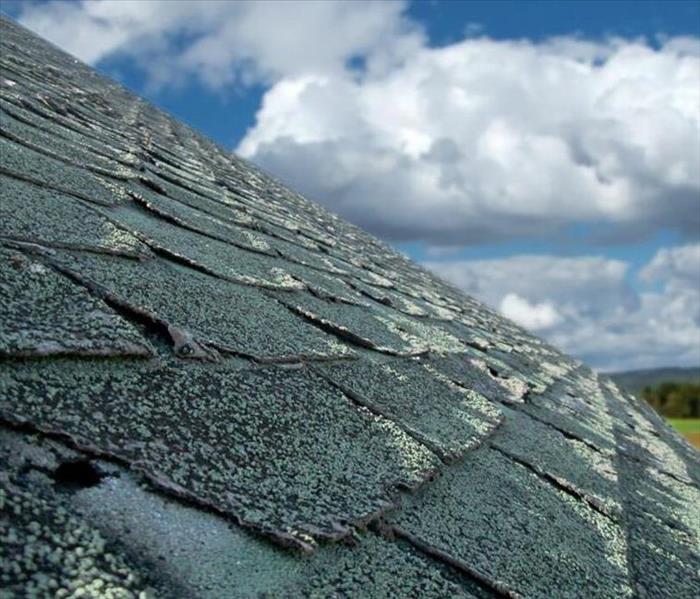 Types of Damage Caused by Hail
Types of Damage Caused by Hail
When the ravages of nature take a toll, causing roof damage, it can be upsetting.. Rain, sleet, snow load, wind can all cause problems and leaks, but the topic here is the potentially destructive force of hail.
Types of Damage Caused by Hail
Hail does not just occur at any one specific season, but can happen year round. When it comes to your roof, the damage is recognizable if you know what you are looking for. Here are some guidelines that may help.
- Impact indentations have no distinct edge, where installation dents likely have an edge from a hammer.
- Broken or cracked shingles can be a sign of hail damage if there are several and they are scattered across the roof, particularly the tile or terra cotta type.
- Spatter marks that look like something hit and then skidded.
- Missing shingles or those that look like the surface was broken away on impact.
Reasons Hail is Harmful
Storm damage from hail can shorten the life of your roof. Keeping the roofing surface in good shape can help minimize damage. Make sure all shingles are nailed down and flashings are sealed at the edges to reduce roof damage. Secure rain gutter to prevent it coming down. Hail damage can cause leaks or even flood damage inside your building. Insulation can become soaked and the extra weight can cause sections of the ceiling to cave in.
Getting Help
In many cases, property insurance will help with the cost of repairs, providing that the roof has been well maintained. A professional water damage restoration company in Fayette County can help with storm cleanup. Water removal and mold abatement are key to completing a sound restoration and making your building safe again. Inspect for roof damage following every hail event to ensure problems are taken care of in a timely manner. If serious problems occur requiring flood cleanup, get the help you need.
Tracie "Dusty" Nichols
724-628-3022
Do Not Drive Through Flood Waters
3/11/2022 (Permalink)
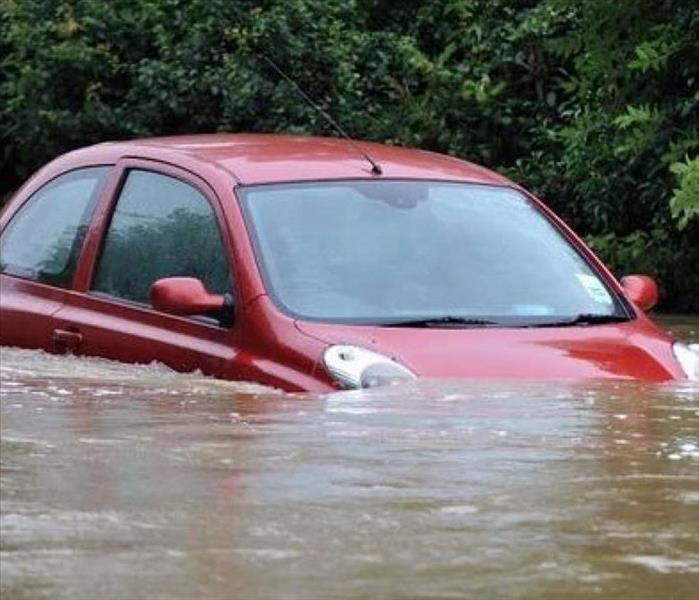 Do Not Drive Through Flood Waters
Do Not Drive Through Flood Waters
3 Reasons Not To Drive Through Flood Water
The temptation to drive through flood water can be difficult to resist. Perhaps you are eager to get home to deal with your flooded basement, or maybe you just don’t want to take the time to go around. Driving down a flooded street can be dangerous, so consider letting a professional storm damage restoration service clean up your basement, while you review these three reasons not to drive through floodwater:
1. You could damage your vehicle. Most cars only have a few inches of ground clearance and even a large truck or SUV may not have more than a couple of feet. Flood water can damage the engine, electrical system and interior of your vehicle. Additionally, flooded roads may have potholes, debris and other obstacles concealed by standing water.
2. You could lose control of your vehicle. As little as six inches of standing water on a flooded street can cause you to lose traction, skid off the road and cause an accident. 12 inches of water can cause most cars to float. A floating vehicle won’t respond to your attempts to steer or brake, which could lead to an accident, or even cause your vehicle to be washed away. Floodwaters can also stall engines. A car with no working engine can not be driven out of floodwater or maneuvered to avoid potential collisions.
3. You could drown. A vehicle that is stalled or washed away by floodwaters can fill with water and cause drowning or be washed into a river or creek. The people who may attempt to rescue you from your flooded vehicle are also at risk of drowning.
In almost all cases, the risks of driving down a flooded street outweigh any time or inconvenience you might save by not taking a detour. If there is a potential for flood conditions in the forecast the travel tips may help you successfully navigate areas at high risk for flooding.
Tracie "Dusty" Nichols
724-628-3022
How To Prepare For Winter Storms
12/2/2021 (Permalink)
Are you familiar with winter storms?! We are!
SERVPRO of Fayette County can help you prepare your home/ business.
Winter storms and how to prepare your home:
-Installation is a big key and needs to be done correctly.
-Install some storm windows or use plastic for windows.
-Consider safe heating techniques to help with fires/ fire damage.
-Look into ways to help pipes from freezing to help with future pipe bursts.
-If located in rural areas, think about snow fences to help with snow drifts.
-In the spring, think about ways to help your home with some flood damage techniques when the snow is time to thaw.
Anymore questions please call us today! *Free estimates.
Tracie "Dusty" Nichols
724-628-3022
"Like it never even happened."
3 Type of Flood Barriers to Use at Your Business/ Home
10/13/2021 (Permalink)
 Flood Barriers to Use at Your Business/ Home
Flood Barriers to Use at Your Business/ Home
When a big storm comes to the Fayette County area, many flood damage restoration professionals recommend the use of flood barriers such as a sandbag wall to help prevent flooding. However, sandbagging isn’t the only form of barrier you may utilize. If water damage does occur, these professionals can help with cleanup and repairs.
1. Inflatable barrier
- One form of many flood dams available to help protect your business is the inflatable barrier. Composed of durable fabrics, these are often weighted on the bottom to help them stay in place and can be pumped full of air to create a wall around the space you wish to protect. When the danger of flooding is over they can be deflated, and carefully folded and stored away.
2. Creative Landscaping
- Another alternative to using a sandbag wall is to creatively use the landscaping around the building to direct water flow. This is a more permanent solution which may help in areas where there are frequent storms. Lawns can be sloped, and plates and soils can be chosen specifically to help absorb water. Retaining walls can also be included to help prevent erosion.
3. Water Barrier
- A water barrier is similar to an inflatable barrier in that it is a collapsible tube that can be filled to create a wall. However, these barriers are filled with water, often from a garden hose, to make them heavy enough to be immobile. Once the danger of storm flooding is passed they can be safely emptied and then stored for later use.
- Use of barriers such as a sandbag wall.
Inflatable barriers, creative landscaping, and water barriers can help protect your business from flooding. There are many options available and you may wish to consult a professional to choose the best option for your business’s needs. If water damage does occur, a flood damage restoration service may be able to help.
Tracie "Dusty" Nichols
724-628-3022
Do you have a Storm Door?
6/30/2021 (Permalink)
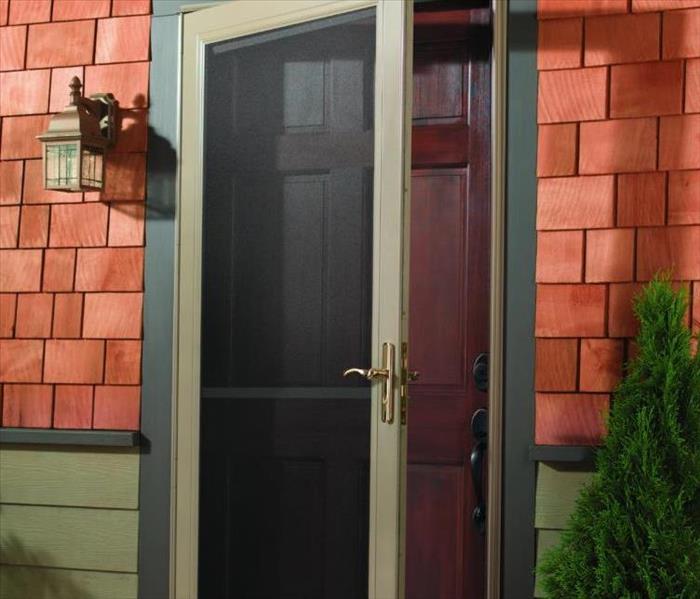 Do you have a Storm Door?
Do you have a Storm Door?
If your home's front door is durable and sturdy, a storm door may seem unnecessary. However, there are more benefits to a storm door, such as added protection against intrusion and energy efficiency. Here are some advantages that will help you decide if having a storm door is for you.
1. Noise Minimization- Noise travels the air through molecule vibrations. Recording studios use doubled doors that contain thick material to slow down the vibration of air, therefore reducing noise entry into a room. Similarly, storm doors introduce a noise reducing effect, turning your home into a quiet getaway.
2. Energy Efficiency- The first principle of insulation is that the seal of the barrier should have no gap, therefore not allowing temperature-regulated air to escape, and unregulated air to enter. A storm door can help improve insulation by adding barriers to your entryway, which is the most susceptible part of your home.
3. Security- Storm doors generally come with a bolt-and-padlock feature, advanced security vault locks or strengthen screens and reinforced fiberglass. These features add security to the home, compared to a regular door.
4. Style- The entrance door of your home is the first thing people see. If you are looking to make a good impression, storm doors can be crafted with elegance and according to your specifications using materials such as wood, plexiglass, aluminum, and PVC.
5. Affordability- Replacing any door in your home is not cheap. You will have to buy a prefabricated door, or the materials to make one and hire a professional contractor to install it. A beautifully designed storm door can be a better solution than simply replacing it with another regular door since it is more durable and reliable.
6. Ventilation- Storm doors are versatile and generally have screen and fiberglass windows, allowing to switch between them, to get air flow, or maintain indoor temperatures.
7. Value- Storm doors are durable and affordable. They can be made from wood, aluminum or other sturdy materials. They are made to last and can be a great investment because they will add value to your home if you decide to sell it in the future.
Any questions?
Call today!
Tracie "Dusty" Nichols
724-628-3022
Do you know the difference between a tornado WATCH and a tornado WARNING?
5/21/2021 (Permalink)
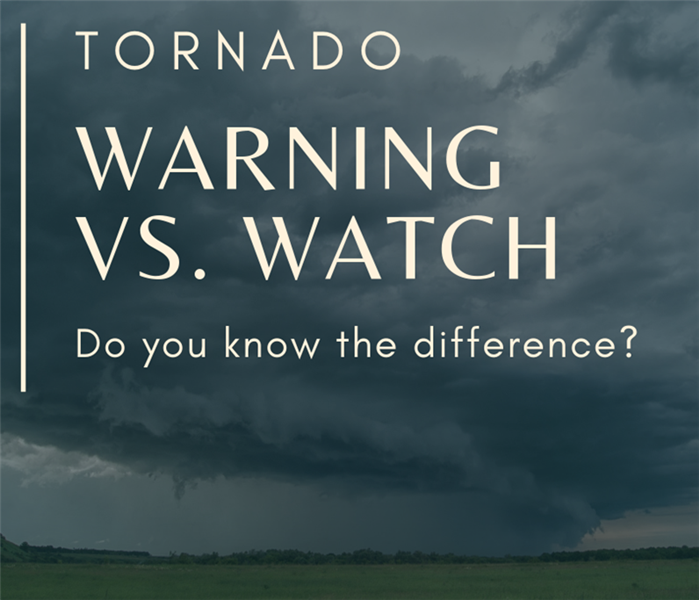 Do you know the difference between a tornado WATCH and a tornado WARNING?
Do you know the difference between a tornado WATCH and a tornado WARNING?
Do you know the difference between a tornado WATCH and a tornado WARNING?
Tornadoes are nature’s most violent storms. They start out as powerful thunderstorms and build up into funnel-shaped clouds that reach from the thunderstorm to the ground. These whirling winds can reach up to 300 miles per hour and have the capability to destroy everything in its path. Tornadoes develop quickly and there may be little to no advanced warning before one hits your area. The best thing to do is know the basics and be sure to plan ahead.
A tornado WATCH is the term used to identify that the weather conditions are favorable for a tornado. This is a time to stay alert and prepare for a possible tornado. When experiencing a tornado WARNING, that means a tornado has been spotted and there is a serious threat to life and property to those in its path. This is a time to act and find shelter. Everyone should have a way to receive a tornado warning even while sleeping.
Emergency alerts can sound an alarm on your smartphone when a warning is issued for your area. When a warning is issued, it is best to seek shelter in a small interior room of a sturdy building; a basement, closet, hallway or a windowless bathroom.
Knowing the difference between the two can prepare you for the necessary steps to take when considering the threat of severe weather.
If you have any questions, call 724-628-3022.
Tracie "Dusty" Nichols
Power Outages with Having a Sump Pump
5/5/2021 (Permalink)
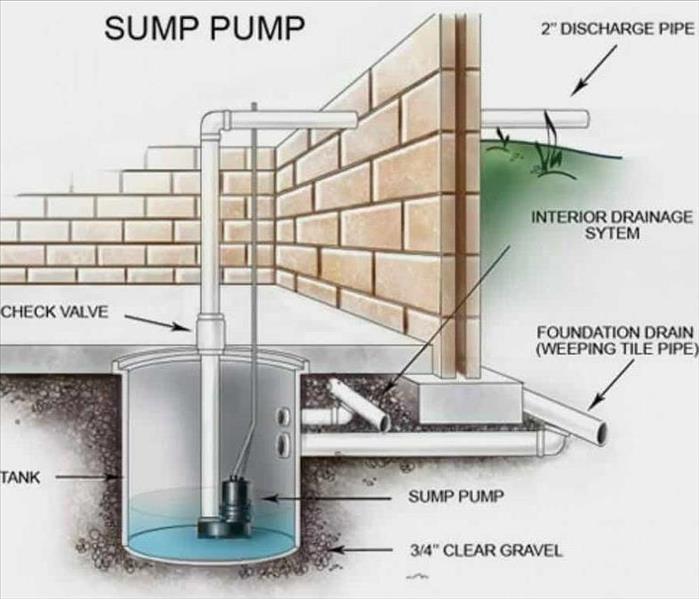 Guide of Sump Pump.
Guide of Sump Pump.
Here is information about sump pumps:
If you have a sump pump, most of the time you don't realize how important it is until it stops working.
Power outages, failure, and a sump pump that cannot handle the capacity are common problems.
- Avoid potential problems by doing routine inspections or replacing your old sump pump. Usually sump pumps should be replaced about 5 years or according to manufacturer's guidelines and each year the sump, switch and float should be inspected as well.
- Pay attention to how often the sump pump is running and if it runs regularly or there is a higher water table, consider a sump pump with higher horsepower.
- Another way to increase the pump's efficiency and prolong its life is to clean your sump pit, remove any dirt, sand, gravel and other debris routinely. Ensure that the discharge line opening is free of obstructions so that water can be pumped through the line and out of your basement or crawlspace and also be aware in the winter the discharge line may freeze bringing the water back into your house.
- Regular checks can make sure you don't ever get surprised by your sump pump!
If you have any questions, give us a call today!
Tracie "Dusty" Nichols
724-628-3022
Different Types of Storm Damage
4/17/2021 (Permalink)
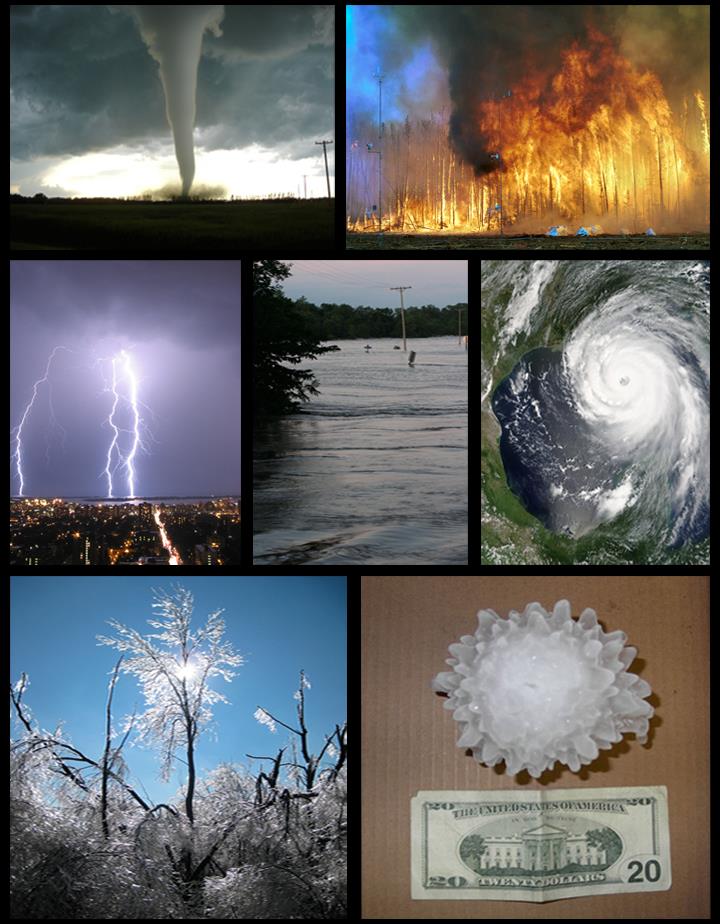 Different Types of Storm Damage
Different Types of Storm Damage
Did you know that there are different types of Storm Damage?
Storm Related Water Damage
-This category of storm damage includes flooding events like tropical storms, flash floods, tornadoes, and hurricanes or Pretty much any storm related event that causes water to intrude into your home or business. This type of damage often happens as a result of or alongside several of the other common types of storm damage.
Wind Damage
-High winds can cause significant damage to roofs, trees, vehicles and windows.
Hail Damage
-Dents in shingles, vents and cars
Lightening Damage
-Can spark fires
Winter Storms
-Freezing Rain, snow which can cause roof collapse, ice dams and pipe burst.
Regardless of the type of storm damage that you may experience, SERVPRO of Fayette County is available to walk you through the necessary steps needed to restore your home or business.
"Like it never even happened."
Tracie "Dusty" Nichols
724-628-3022
Winter Storms
12/2/2020 (Permalink)
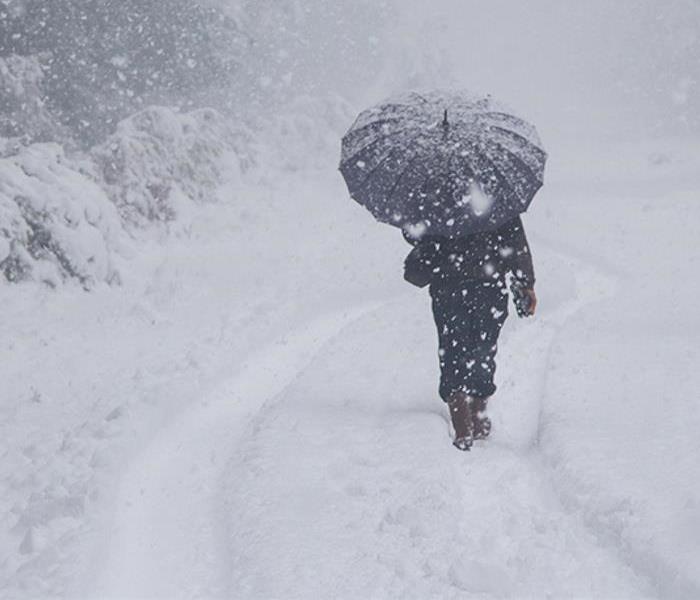 Winter Storms and some cautions to be concerned about.
Winter Storms and some cautions to be concerned about.
Does your area get affected by winter storms?
Winter storms can be a disaster for your home or business. We are here to help you avoid water damage or fire damage SERVPRO of Fayette is here to educate the community of the best practices that you should use.
A major winter storm can be lethal. You should prepare for the cold weather conditions and respond to them effectively so you can reduce the dangers caused by winter storms.
Before the storm hits: You should watch and be familiar with winter storm warning messages. (See Winter Storm Watches and Warnings.) Make sure you service any snow removal equipment, have rock salt on hand to melt ice on walkways, and you can use kitty litter to generate temporary traction. Make sure you have sufficient heating fuel and make sure regular fuel sources may be cut off. You should also winterize your home. Here are some tips to do so: Insulate walls and attic, Caulk and weather-strip doors and windows, and Install storm windows or cover windows with plastic from the inside.
In case you do not have. have safe emergency heating equipment available. Examples :Fireplace with ample supply of wood, Small, well-vented, wood, coal, or camp stove with fuel, and Portable space heaters or kerosene heaters. You should always install and check smoke detectors.
Another tip is that you can contact your Parish Emergency Management Office or American Red Cross chapter for more information on winter storms. When storms hit, it is a good idea to do some things to help keep pipes from freezing: Wrap pipes in insulation or layers of old newspapers, Cover the newspapers with plastic to keep out moisture, Let faucets drip a little to avoid freezing, and Know how to shut off water valves.
Lastly, you should have disaster supplies on hand, in case the power goes out. Some things to keep around: Flashlight and extra batteries, Portable, battery-operated radio and extra batteries, First aid kit, One-week supply of food (include items that do not require refrigeration or cooking in case the power is shut off), Non Electric can opener, One-week supply of essential prescription medications, Extra blankets and sleeping bags, and Fire extinguisher (A-B-C type).
Any questions, you can also call us!
Thunderstorms and Damage
12/2/2020 (Permalink)
Thunderstorms can be one of the more dramatic weather events and they can make themselves known through the crashes and bright bolts of lightning.
Here is how storms can cause damage to your home so you can be aware of what to watch out for. There are several ways that a thunderstorm can lead to issues around the house. Some main ways can be lightning damage, flood damage and the development of water leaks that are in your home. Knowing what can happen is the best way to keep yourself and your home safe/ damage-free.
Three main things can happen when a thunderstorm rolls through your area.
1. Lightning Damage: Some thunderstorms are caused by electrical charges in the air, this produces the lightning and thunder we can see and hear. While many lightning bolts will strike from cloud to cloud, the ones that strike the ground can cause serious damage to buildings/homes. Lightning that strikes on or near a home can send an electrical current through the wiring, which can lead to surges to electronics and even electrical fires within the walls of your home or business.
2. Flood Damage: Floods can be caused for many reasons, but flash floods are caused by sudden, heavy rainfall that overwhelms an area, and they can cause serious damage to the area. Flash floods are a big concern after thunderstorms because they can overwhelm any area and multiple areas. They can catch people off guard, so it is important to always be listening about the weather because flash flooding is a possibility. While the physical damage can cause devastation, the flash floods can also be very dangerous.
3. Water Leaks: Leaks in the house are extremely common after heavy rain, as the moisture can work its way into the home that homeowners were not aware of. You should check your roof after every big storm to look for missing shingles or any indicator that there is a leak underneath. Also check around all windows and doors to ensure their seals have held up and be sure there is no water in your gutters or around your foundation to help with flooding and water damage.
Worrying about Storms?
12/2/2020 (Permalink)
Everyone worries about any kind of storms and what kind of damage that they could do to your home and/ or business. Do not worry too much because SERVPRO of Fayette County is here for you.
After a storm situation there are Service Response Guidelines for SERVPRO of Fayette County. You as a customer just have to remember 1.4. and 8.
1: Within an hour, SERVPRO of Fayette County will be in contact with you.
4: Within four hours, SERVPRO of Fayette County will be onsite if it is urgent.
8: Within 8 hours, there will be a briefing given to you verbally from a service tech from SERVPRO of Fayette County.
If you ever have any questions about preparing for a storm or any questions for any after math, please give us a call.
Tracie "Dusty" Nichols
724-628-3022
Strong Storms
5/21/2020 (Permalink)
You may be aware that a storm is headed your way, because you caught the weather forecast or maybe a friend told you. However some storms can be stronger than you expect. Here are some tips if you find yourself in a storm.
If you are out side and it is lightning, do not us a metal umbrella. And quickly try to find shelter.
If you are inside and the winds are very strong, stay away from windows. If there is a possibility of a tornado, go to the basement . If you don't have a basement, find a place in the house that doesn't have windows.
If you have damage to your home due to a storm. Call SERVPRO.
SERVPRO of Fayette County
Tracie " Dusty" Nichols
724-628-3022
Water Damage From Heavy Rains
5/5/2020 (Permalink)
Water Damage From Contaminated Water
DO'S:
- Avoid all contact with sewage and items contaminated by sewage.
- Wash your hands thoroughly after contact with contaminated items.
DON'TS:
- Spread contaminated water by walking unnecessarily on damaged or wet areas.
- Turn on the HVAC system if there is a possibility of spreading contaminated air.
- Use household fans to dry the structure and spread contaminants.
- Use products for personal hygiene and cleanliness if exposed to contaminated areas.
Note: If exposed to harmful waste, OSHA recommends a post-exposure medical evaluation. Consult your local health department or physician.
Do You Have Contaminated Water? Call SERVPRO of Fayette!
"Like it never even happened."
Tracie "Dusty" Nichols
SERVPRO of Fayette County PA
1211 Avon Dr.
Connellsville, PA 15425
724-628-3022
Put Property Owners Back in Control
4/21/2020 (Permalink)
SERVPRO Franchise Professionals
Our number one goal is returning damaged areas and items to preloss conditions, doing all we can to make it "Like it never even happened." Every SERVPRO Franchise Professional is dedicated to restoring both the property and the lives of the customers being helped.
Like it was never dirty, like it never overflowed, like it never caught fire, like it never spilled, like it never smoldered - whatever the case, with SERVPRO our goal is to make it "Like it never even happened."
If you find yourself in need of a deep cleaning, water clean up, smoke clean up and/or build back to your property, give SERVPRO a call.
"Like it never even happened."
1121 Avon Dr.
Connellsville, PA 15424
724-628-3022
Speed and Efficiency
12/26/2019 (Permalink)
Storms are an aggressive demonstration of the power of nature and it usually happens in the blink of an eye before you can prepare. Storms can cause a significant amount of damage from high winds, heavy rainfall or even hail if its big enough or if its in a high volume. Storms and the damage they cause happen fast, but luckily SERVPRO's Service Response Guidelines assure that representative and crew will be in contact and helping faster than you can even say you need help.
Here at SERVPRO we pride ourselves in having a fast response time so that people can avoid maximum damage and prevent other loss. The longer it takes for the problem to be corrected, more damage is done over time to that property and our fast response time really combats this making SERVPRO the clear choice in the face of a storm.
Loss Recovery
12/26/2019 (Permalink)
During a storm, even sometimes the little ones, something gets damaged. Whether the damage is minuscule and unnoticeable or huge and something you can help but notice, SERVPRO is always there to help remedy the problem in a timely manner. We cant bring back lost or damaged goods but we can clean and restore almost anything that is still intact, as well as rebuild structures that were broken or damaged during the storm.
Here at SERVPRO of Fayette, we do reconstruction on damaged and toppled structures after a storm rolls through and flattens everything in its path. This is a really good way for the customer to feel at peace about his loss and actually believe that they're on the path to recovery and the normalization of their lives.
Ice/Snow Storm
12/26/2019 (Permalink)
Ice storms, snow storms, and extreme cold can cause damages that sometimes can be easily avoided and sometimes can't be avoided at all. Some of these catastrophic events that can happen are frozen pipes, snow build up on roofs causing them to collapse, property damage from ice and other calamities caused by ice and outside influencing factors. These events cause greater damage within the property as well.
Frozen pipes could lead them to burst and cause water damage throughout the house or area in which the pipe is in. A collapsing roof can cause injury to anyone under it as well as water damage from all the snow melting after it collapses. That snow on top could also possibly melt and seep through the cracks of your house also causing water damage in extreme cases. The possibility of property damage and calamity goes up in the winter, luckily SERVPRO will always be around to help make it "Like it never even happened."
What Can You Do To Minimize Storm Damage?
4/26/2019 (Permalink)
Spring is finally here. Even though “April showers bring May flowers,” Mother Nature sometimes throws storms at us as well. Storms have the ability to cause a catastrophic mess but SERVPRO of Fayette County & SERVPRO of Morgantown has the ability to put it all back “Like it never even happened.” quickly and efficiently. We may not be able to control the weather but there are a few things you can do before a storm to try to minimize the damage;
- Put all important documents and photos in a water /fire proof safe
- Discuss your home insurance policy with your agent.
- Keep the name, address, insurance policy and claims reporting telephone number of your insurer and agent in a safe place.
- Take photos of your home and belongings and keep in a safe place for insurance purposes.
- Make a Home inventory list. Include things like the model and serial number, description, and cost at time of purchase.
- Inspect your roof at least twice a year by either yourself or a professional. A few things to look for is any moss or algae growth, excess leaves laying heavily on all or a portion of the roof, loose, missing, buckled, or curled shingles, and check for any cracking or damaged counter flashing (Counter flashing: Is a metal waterproof strip installed over areas in need of additional moisture protection such as a chimney)
- Check gutters. You’re going to want to make sure you’re gutters are free of any debris as well as checking to make sure your downspouts are flowing away from your home to prevent any damage to your foundation which could cause flooding and water damage
- Check your exterior walls for any cracking brick or concrete and check to make sure you don’t have any loose siding.
- If you have a sump pump in your basement, check to make sure your basement sump pump is working properly. If you don’t already have a sump pump, consider getting one if your basement has flooded before. You live in a flat area, you’re area gets a lot of rain or snow, or if your home has a finished basement or you use it for storage
- Unplug all unnecessary appliances and other electronics before a storm.
- Trim your trees. Remove any branches that hang over your home or have a risk of falling and damaging any of your property
- Remove any loose objects and debris from your yard or secure it to prevent them from becoming projectiles that could damage your property.
- MOST IMPORTANTLY, Stay safe! Items can be replaced and homes can be fixed.
What do you do after?
- Avoid any downed power lines (Assume they all have live electricity)
- Inspect your property for any structural damages. Notify your insurance company/Agent as soon as possible
- DON’T throw away any damaged items until an insurance adjuster visits your home.
SERVPRO of Fayette County & SERVPRO of Morgantown’s team members are here to help you clean up any size disaster “Like it never even happened.”
Tornadoes - Finding Shelter
9/7/2018 (Permalink)
Tornadoes are violently rotating columns of air that are created from a thunderstorm and funnel to the ground. Tornadoes can be very destructive to buildings, vehicles, and creating deadly objects to fly in the air. Tornadoes can happen anytime and anywhere. Intense winds can reach over 200 MPH.
Find Safe Shelter During a Tornado Warning
- If you can safely get to a sturdy building, do so immediately.
- Go to a safe room, basement, storm cellar.
- If you are in a building with no basement, then get to a small interior room on the lowest level.
- Stay away from windows, doors and outside walls.
- Do not get under an overpass or bridge. You are safer in a low, flat location.
- Watch out for flying debris that can cause injury or death.
- Use your arms to protect your head or neck.
Tornadoes - Prepare NOW
9/7/2018 (Permalink)
Preparing Before a Tornado Hits Your Area
- Know your area's tornado risk. In the U.S., the Midwest and the Southeast have a greater risk for tornadoes.
- Know the signs of a tornado, including a rotating, funnel-shaped cloud; an approaching cloud of debris; or a loud roar - similar to a freight train.
- Sign up for your community's warning system. The Emergency Alert System (ESA) and National Oceanic and Atmospheric Administration (NOAA) Weather Radio also provide emergency alerts. If your community has sirens, then become familiar with the warning tone.
- Pay attention to weather reports. Meteorologists can predict when conditions might be right for a tornado.
- Identify and practice going to a safe shelter in the event of high winds, such a safe room built using FEMA criteria or a storm shelter built to ICC 500 standards. The next best protection is a small, interior, windowless room on the lowest level of a sturdy building.
- Consider construction your own sage room that meets FEMA or ICC 500 standards.
Tornadoes - Survive During the Storm
9/7/2018 (Permalink)
Surviving During a Tornado
- Immediately go to a safe location that you identified.
- Take additional cover by shielding your head and neck with your arms and putting materials such as furniture and blankets around you.
- Listen to EAS, NOAA Weather Radio, or local alerting systems for current emergency information and instructions.
- Do not try to out run a tornado in a vehicle.
- If you are in a car or outdoors and cannot get to a building, cover your head and neck with your arms and cover your body with a coat or blanket, it possible.
Be Safe After the Storm
- Keep listening to EAS, NOAA Weather Radio, and local authorities for updated information.
- If you are trapped, cover your mouth with a cloth or mask to avoid breathing dust. Try to send a text, bang on a pipe or wall, or use a whistle instead of shouting
- Stay clear of fallen power lines or broken utility lines.
- Do not enter damaged buildings until you are told that they are safe.
- Save your phone calls for emergencies. Phone systems are often sown or busy after a disaster. Use text messaging or social media to communicate with family and friends.
- Be careful during clean-up. Wear thick-soled shoes, long pants, and work gloves.
Storm Damage to your Home
9/5/2018 (Permalink)
SERVPRO of Fayette County PA specializes in storm and flood damage restoration. Our crews are highly trained and we use specialized equipment to restore your property to its pre-storm condition.
Since we are locally owned and operated, we are able to respond quicker with the right resources, which is extremely important. A fast response lessens the damage, limits further damage, and reduces the restoration cost.
When storms hit Fayette County, we can scale our resources to handle a large storm or flooding disaster. We can accerss equipment and personnel from a network of 1,650 Franchises across the country and elite Disaster Recovery Teams!
If your home or business has been effected by a storm, call SERVPRO of Fayette County !
724-628-3022
Like it never even happened.
When Storms Hit Fayette County, SERVPRO is ready!
12/8/2016 (Permalink)
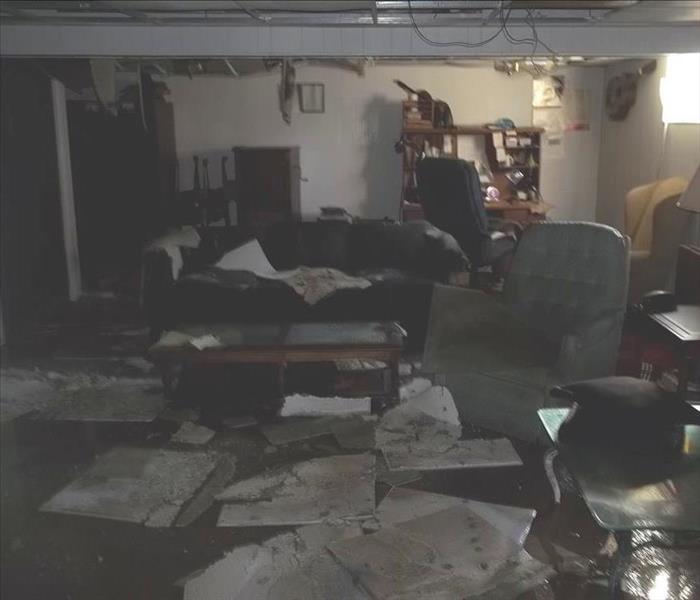 Our highly trained crews are ready to respond 24/7 to storm or flood damage in Fayette County.
Our highly trained crews are ready to respond 24/7 to storm or flood damage in Fayette County.
SERVPRO of Fayette County specializes in storm and flood damage restoration. Our crews are highly trained and we use specialized equipment to restore your property to its pre-storm condition.
Faster Response
Since we are locally owned and operated, we are able to respond quicker with the right resources, which is extremely important. A fast response lessens the damage, limits further damage, and reduces the restoration cost.
Resources to Handle Floods and Storms
When storms hit the Fayette County area, we can scale our resources to handle a large storm or flooding disaster. We can access equipment and personnel from a network of 1,650 Franchises across the country and elite Disaster Recovery Teams [Disaster Recovery Page] that are strategically located throughout the United States.
Have Storm or Flood Damage? Call Us Today (724) 628-3022





 24/7 Emergency Service
24/7 Emergency Service









